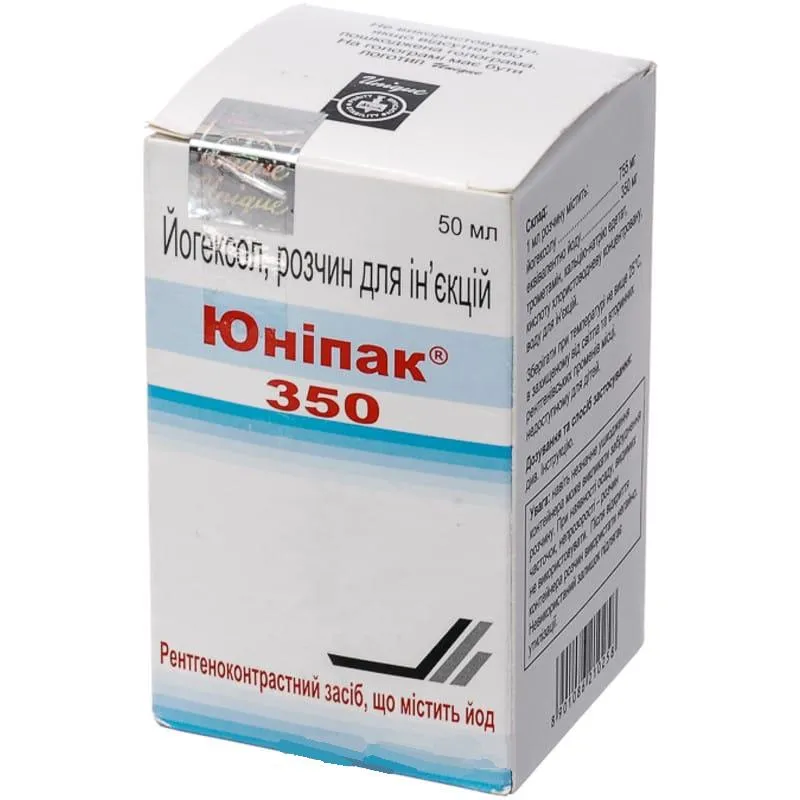Description
Unipak (Yogexol) Solution for Injections 350 mg/ml. 100 ml. №1 Vial
Ingredients
- Unipak (Yogexol) solution for injections contains 350 mg/ml of the active ingredient yogexol.
- Other ingredients may include preservatives and stabilizers.
Dosage
The recommended dosage of Unipak (Yogexol) solution for injections is determined by a healthcare provider based on the patient’s condition, age, and weight. It is typically administered intravenously.
Indications
Unipak (Yogexol) solution for injections is indicated for use in diagnostic imaging procedures to enhance the visibility of internal body structures.
Contraindications
- Patients with a known hypersensitivity to yogexol or any of the other ingredients should not use Unipak solution for injections.
- It is also contraindicated in patients with severe renal impairment.
Directions
Unipak (Yogexol) solution for injections should be administered by healthcare professionals trained in the use of radiographic contrast agents. The injection site should be carefully monitored for any signs of adverse reactions.
Scientific Evidence
Studies have shown that the use of yogexol as a contrast agent in diagnostic imaging procedures can significantly improve the visualization of internal structures, aiding in the accurate diagnosis of various medical conditions. Research published in the Journal of Radiology demonstrated the efficacy and safety of yogexol in enhancing imaging quality.
Additional Information
- It is important to inform your healthcare provider about any allergies or medical conditions before using Unipak (Yogexol) solution for injections.
- Close monitoring for any adverse reactions is crucial during and after the administration of this contrast agent.
Pharmacological Effects: Yogexol works by altering the way X-rays pass through the body, making the internal structures more visible on imaging scans. It is excreted primarily through the kidneys, so patients with renal impairment require special consideration.
Clinical Trials: Clinical trials comparing the effectiveness of Unipak (Yogexol) solution for injections with other contrast agents have shown comparable diagnostic outcomes with a favorable safety profile. These trials have contributed to the widespread use of yogexol in medical imaging.





